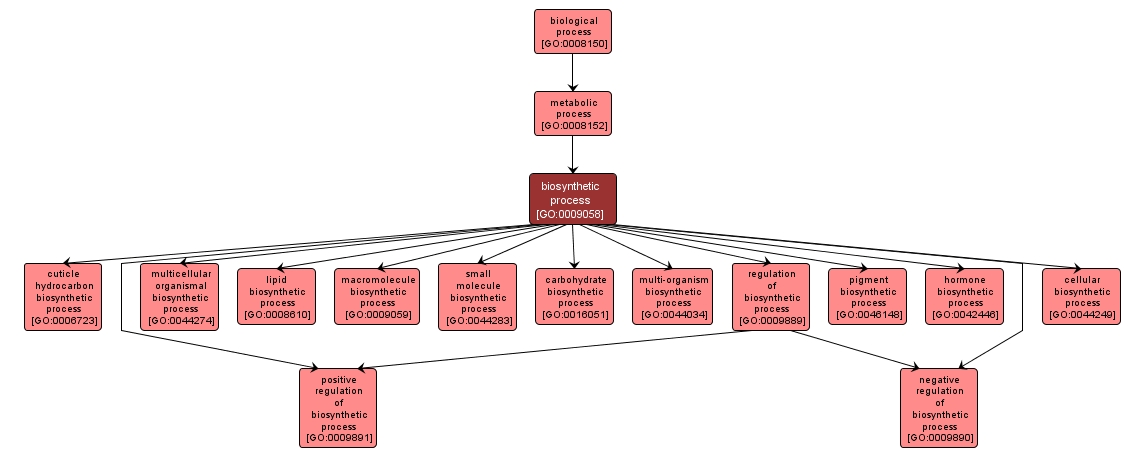GO TERM SUMMARY
|
| Name: |
biosynthetic process |
| Acc: |
GO:0009058 |
| Aspect: |
Biological Process |
| Desc: |
The chemical reactions and pathways resulting in the formation of substances; typically the energy-requiring part of metabolism in which simpler substances are transformed into more complex ones. |
Synonyms:
- synthesis
- biosynthesis
- formation
- anabolism
|
|

|
INTERACTIVE GO GRAPH
|














